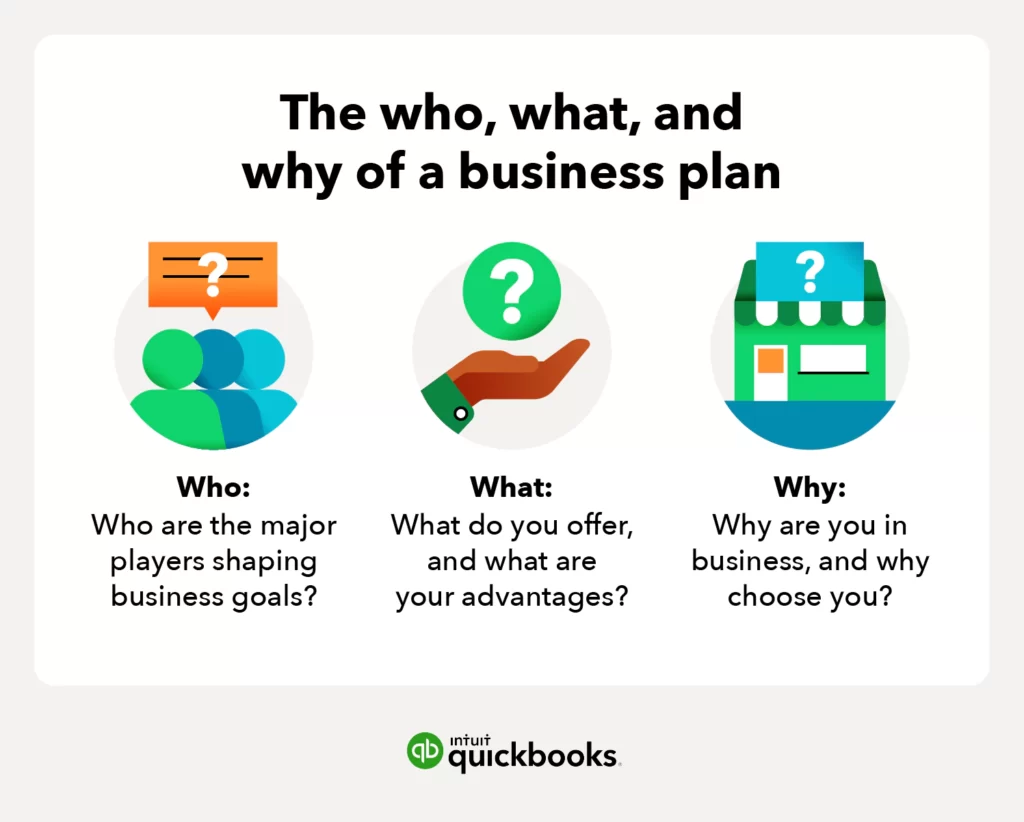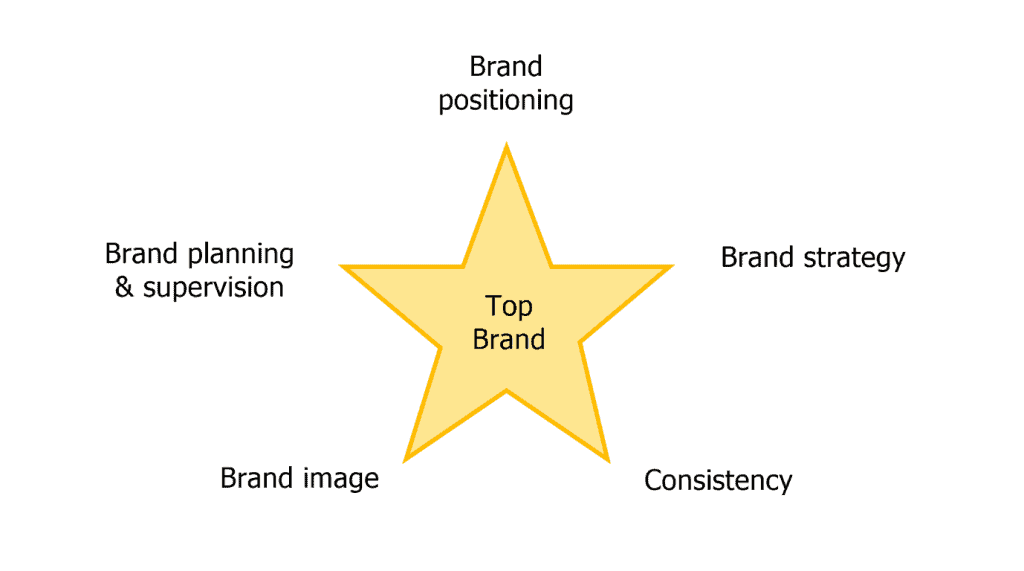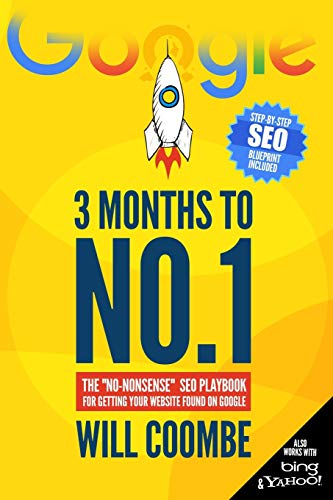How to Start a Business: 10-Step Guide for Entrepreneurs
Embarking on the entrepreneurship journey is an exciting yet challenging endeavour that requires passion, perseverance, and a willingness to take calculated risks. With thoughtful planning and a relentless drive to succeed, entrepreneurs pave their paths and bring innovative ideas to life.
The road to building a successful business begins with identifying a problem worth solving and developing a unique solution. It involves conducting market research, formulating a business plan, securing funding, and bringing together the right team. There will inevitably be roadblocks and setbacks, but resilient entrepreneurs overcome obstacles through agility, creative problem-solving, and sheer determination.
Launching a business is only the beginning. Entrepreneurs must work tirelessly to build brand awareness, acquire customers, manage finances, and scale operations. There will be victories to celebrate and invaluable lessons to learn during adversity. With the courage to take the leap and the tenacity to see it through, entrepreneurs have the power to disrupt industries, shape the future, and transform their own lives in the process.
The entrepreneurial journey requires vision, grit, adaptability, and perseverance through inevitable ups and downs. But for those willing to take the road less travelled, the rewards of following their passions and bringing bold ideas to life are worth the challenges. With the right mindset and strategy, the possibilities are endless.
Table of Contents
How to Start a Business (in 10 Steps)
1 – Finding Your Business Idea

Your business idea is the cornerstone of your entire entrepreneurial venture. It's essential to identify a unique, viable concept that solves a specific problem or fulfils an unmet need in the market. The best business ideas are often born from your passions, skills, and areas of expertise.
Start by taking inventory of your strengths, interests, and experiences. What skills do you have that you enjoy using? What issues or challenges get your creative juices flowing? Your business idea should be something you find intrinsically motivating and are willing to devote yourself to long-term.
Next, conduct thorough market research to identify potential opportunities. Look for gaps in the market, emerging trends, or underserved target audiences that your business could serve. Analyse your potential competitors to see what solutions exist and how you can provide something better, faster, or cheaper.
As you explore ideas, ask yourself key questions such as:
- What problem can my business solve for my target audience? Understand their pain points and needs.
- Why will my solution be better than existing options? Determine your competitive advantage.
- Is my idea scalable and financially viable in the long term? Evaluate the growth potential.
- What resources do I need to get started? Assess the feasibility.
- How passionate am I about this concept? Ensure it aligns with your mission.
Vet your ideas with impartial third parties to get unbiased feedback. Develop a clear value proposition explaining how your business fills a need. Refine and adjust your concept based on research insights before settling on the perfect idea to move forward with.
With a problem-solving mindset, market savvy, and unrelenting passion, you can identify the ideal business idea to launch your venture. The most successful statements address actual pain points for customers with creative solutions. By putting in the upfront work to develop and validate your idea, you'll establish a solid foundation for your business.
2 – Market Research and Validation

Validating your business idea through comprehensive market research is a crucial next step after initially brainstorming and narrowing down a concept. This process will provide valuable insights to determine your idea has actual market viability and help refine your strategy.
The first component of market research should focus on clearly defining your target audience by creating detailed customer personas. Consider demographics like age, income level, location, and psychographics such as values, interests, pain points and shopping habits. Be as specific as possible while avoiding limiting generalisations. Defining your ideal customer will shape important decisions like product features, pricing, marketing channels and positioning.
Thoroughly analyse your competition to identify opportunities to differentiate or gain an edge in the marketplace. Study not only direct competitors but also indirect competition and substitutes. Assess product offerings, pricing, promotions, distribution channels, and brand messaging. Look for weaknesses or gaps you can capitalise on. Stay updated on new product launches and shifts in strategy.
- Hague, Paul (Author)
- English (Publication Language)
- 392 Pages – 11/30/2021 (Publication Date) – Kogan Page (Publisher)
Examining more comprehensive market conditions and trends will further validate and refine your concept. Research growth projections, technological disruptions, regulatory changes and other macroeconomic factors that may impact customer demand and the competitive landscape. You can leverage supportive trends or hedge against potential headwinds.
Incorporating insights from each area of research will allow you to assess the feasibility of your idea realistically. You can then confidently shape a well-informed business plan with a robust understanding of your customers, competition and market dynamics. Conducting diligent research reduces risk and sets you up for success.
3 – Crafting a Business Plan

A well-structured business plan is the essential roadmap that provides direction and focus to help guide your startup or existing business to success. It outlines your business goals, strategies, financial projections, and operational plans to help drive growth and profitability.
A comprehensive, robust business plan is critical for attracting investors, securing business loans, recruiting talent, and strategically guiding your business's growth and sustainability over both the short-term and long run.
Key elements that every thorough business plan should contain:
- Executive Summary: A high-level overview that summarises your business goals and objectives. Cover your mission, vision, value proposition, target market, competitive advantages, financial outlook, and growth strategies concisely and compellingly.
- Company Description: Detailed background on your company's history, ownership structure, location(s), facilities, number of employees, and anything else relevant to conveying what your business does and its current state.
- Market Analysis: In-depth research and insights into your industry, target market segments, customer demographics and buying behaviours, competitive landscape, industry trends, and market growth potential. Thorough analysis demonstrates your solid understanding of the external environment.
- Products and Services: A clear description of your product and service offerings and their unique value and benefits compared to competitors. Outline your proprietary intellectual property or special sauce.
- Marketing and Sales Strategies: Strategic plans for how you will attract customers, retain users, distinguish your brand, price products/services, promote offers, distribute products, and grow sales throughout distinct channels and customer segments.
- Financial Projections: Forecasted financial statements, including income statement, balance sheet, cash flow statement, and statement of owner's equity. Back up projections with sound assumptions on expenses, sales, capital expenditure, customer acquisition costs, margins, funding requirements, and profitability timeframes.
- Operations Plan: An overview of business operations, including production/delivery processes, physical requirements, technology resources, human capital needs, inventory management, and suppliers. Demonstrate capabilities to deliver on your plan.
The level of detail should reflect the stage of your business, with early-stage ventures focused more on value proposition and go-to-market strategy. In contrast, existing businesses emphasise historical performance, operations, and financials. Tailor your plan to your specific objectives and audience. A solid business plan is an internal guide and an external selling document to spur growth.
4 – Legal and Regulatory Considerations

Starting a new business is exciting and involves navigating various legal and regulatory requirements. Depending on the type of business you are launching, its location, and its industry, you need to consider several critical legal steps and compliance issues.
Choosing the proper business structure is a foundational decision you must make early on. Standard options include sole proprietorship, partnership, limited liability company (LLC), corporation, and nonprofit entity. Each structure has different implications regarding ownership, liability protection, tax treatment, and operating formalities. Consult with an attorney to determine which system best suits your business needs.
Once you decide on a business structure, you will likely need to register your business name and obtain any necessary permits and licenses. Requirements vary by state and locality. For example, you may need a sales tax permit, food service permit, liquor license, or other industry-specific licenses. Failure to comply with licensing rules could result in penalties or being shut down.
You also need to set up tax identification numbers to pay taxes appropriately. As a business owner, you may need an Employer Identification Number (EIN) from the IRS and your Social Security Number. You should also register for state and local taxes if applicable. Setting up business bank accounts properly is also an important task.
Other critical legal compliance steps include:
- Understanding employment laws if you plan to hire staff.
- Drafting contracts.
- Obtain insurance and follow regulations that apply to your industry.
For example, a restaurant must comply with health codes, while a retailer needs to understand consumer protection laws.
Starting a successful business takes research, planning, and surrounding yourself with experienced legal and accounting advisors. Investing time upfront to structure your business correctly and comply with laws will save you significant problems. With careful preparation, you can launch your exciting startup while meeting all regulatory requirements. Let me know if you need any clarification or have additional questions!
5 – Securing Funding

Bringing a business idea to life requires careful planning and sufficient funding. The amount and type of financing you need depends on your specific goals and the stage of your company. As an entrepreneur, you have several options to fund your startup or existing business.
Personal Savings
Bootstrapping your business with personal savings is an accessible starting point for many founders. Depending on your current financial situation, you can self-fund the initial product development, marketing efforts, and operating costs. While relying solely on personal savings can be risky, it allows you to maintain full ownership and control of your business.
Bank Loans
Traditional bank loans provide an influx of capital to get your business off the ground or support additional growth. Banks offer various small business loans and lines of credit. You'll need a strong business plan, solid credit score, and collateral to qualify. Ensure you understand the loan terms, as you'll need to make regular repayments with interest.
Credit Cards
Business credit cards can supplement your funding, especially in the early stages. The flexibility of credit cards allows you to use the funds for diverse expenses like equipment, inventory, software, travel, and more. Be cautious of high interest rates and make timely payments to avoid ballooning debt.
Angel Investors
Angel investors are wealthy individuals who provide startup capital in exchange for convertible debt or equity in your company. Pitch your business plan to target angel investors with industry experience and can also provide mentorship. Make sure you research angels who share your vision and values.
Venture Capital
Venture capital firms invest substantial amounts in high-growth startups perceived as likely to deliver significant returns. Venture capitalists offer funding as well as strategic and operational guidance. However, they also demand considerable equity and control in your business. Venture capital works for scalable startups but is harder to secure.
Crowdfunding
Crowdfunding platforms like Kickstarter and Indiegogo allow you to raise small amounts from a large pool of investors. You can showcase your business to potential customers and build awareness. However, it would be best if you had an appealing campaign and must deliver on your promises. Crowdfunding is best for niche products with a ready customer base.
With thorough planning and analysis, you can determine the ideal funding mix to turn your inspiring business idea into a thriving company. Evaluate all available options and choose the ones that align with your short-term needs and long-term vision.
6 – Building Your Brand Identity

Establishing a solid brand identity is crucial for standing out in a crowded marketplace and making a lasting impression on your target audience. Your brand identity encompasses the visual and narrative elements that express the essence of your brand. The combination of colours, logos, fonts, images, messaging, personality, and more makes your brand instantly recognisable.
The critical steps to creating a compelling brand identity are:
- Define your brand personality and values. Get clear on what your brand stands for and how you want people to perceive you. What emotions do you want to evoke? What promises are you making to customers? Your brand personality should inform all aspects of your identity.
- Design an iconic logo. Your logo is the face of your brand and will appear on all touchpoints, so it's worth investing in a distinctive, memorable design. Consider the shapes, fonts, and colours that represent your brand. Avoid overly complex or generic logos.
- Choose a colour palette that pops. Colours evoke emotions and associations that shape brand perception. Select primary and secondary colours that reinforce your brand personality. Ensure enough contrast for accessibility.
- Create cohesive visual branding. Develop brand guidelines to maintain visual consistency across mediums like your website, packaging, signage, etc. Consider your typography, image style, and tone of voice.
- Craft your brand story and key messages. Outline your brand's origin, mission, promise, and persona in your story. Distil your core differentiators and value proposition into concise, compelling messages.
- Convey the brand consistently. Maintain alignment across your branding, messaging, customer interactions, and experiences. Live your brand values and personality.
- Revisit and refine your brand identity over time. As your business evolves, your brand may need to as well. But any changes should remain authentic.
You can build customer recognition, trust, and loyalty by consistently reinforcing your unique brand identity across touchpoints. A strong identity becomes synonymous with your brand promise.
7 – Developing Your Product or Service

Now that you have a solid business plan and have secured financing, it's time to start developing your product or service. The product development process is crucial for bringing your vision to life in a way that delights customers. Follow these critical steps for effective product development:
Prototype and Testing
- Build an initial prototype or minimum viable product (MVP) that allows you to test core functionality and get early feedback. Prototyping is all about learning quickly and failing fast to iterate on ideas.
- Conduct alpha and beta testing with a small group of target customers. Get input on design and usability and identify areas for improvement.
- If developing a physical product, build multiple iterations of prototypes using different materials and manufacturing techniques—test for durability, safety and quality.
Iterative Improvements
- Use feedback from prototype testing to refine and enhance your product. Make incremental upgrades between iterations based on the most vital user input.
- Pay special attention to aspects of the user experience like simplicity, intuitiveness and pain points. Smooth out rough edges and optimise product-market fit.
- Continue testing new iterations until satisfied with user feedback and engagement. Be willing to go back to the drawing board if needed.
Quality Assurance
- Develop rigorous quality assurance testing procedures, especially for physical products. Identify safety hazards and failure points.
- For digital products and apps, perform extensive QA testing across different devices, operating systems and use cases. Check for bugs, glitches and security vulnerabilities.
- Ensure your product meets all compliance and regulatory requirements for its product category and jurisdictions. Never cut corners on safety and compliance.
By taking a phased, iterative approach to product development, you can perfect your offering and ensure it delivers maximum value to customers. The upfront time and effort will pay off greatly in long-term customer satisfaction.
8 – Creating a Strong Online Presence

An effective online presence is crucial for businesses and professionals looking to reach and engage with their target audience. With so much online commerce and communication, those with a website or social media profiles miss tremendous opportunities to connect with potential customers and clients.
An online presence typically starts with a user-friendly, mobile-responsive website that showcases your brand, products/services and helpful information for site visitors. Investing in professional web design pays dividends through higher visitor engagement and conversions. Optimising your website for search engines through metadata, quality content, and link building should also be a priority, as this is how many people will initially find your site through Google and other search engines.
Implementing digital marketing strategies is critical to driving traffic to your website and increasing visibility. This may involve search engine marketing through pay-per-click ads, content marketing through blogging and social media, and email marketing campaigns to nurture leads. Tracking analytics lets you see which efforts are most effective at generating leads and sales.
- Coombe, Will (Author)
- English (Publication Language)
- 247 Pages – 09/11/2017 (Publication Date) – Independently published (Publisher)
Social media platforms like Facebook, Instagram, Twitter, LinkedIn, and emerging video streaming platforms allow businesses to establish their brand voice, share updates, promote products, and interact with customers or clients. Developing an engaged following takes consistency, creativity, and community building.
With technology rapidly evolving, keeping your online presence fresh is essential. Optimise for mobile, add new content regularly, leverage video/live streaming, and explore emerging platforms. The more informative, consistent and engaging your digital footprint, the more it will help build your brand and connect with your audience.
9 – Launching Your Business

The launch of your business marks an exciting and significant milestone. This is your chance to introduce your brand, products or services to the world. There are several launch strategies you can leverage to create buzz and momentum:
- Start with a soft launch to test things out. Invite a small group of customers or followers to be the first to try your offerings. Use their feedback to refine your products, messaging and processes before the grand opening.
- Build hype on social media leading up to launch day. Share sneak peeks, announcements and stories. Run contests and giveaways to engage your audience.
- Host a VIP launch event for crucial investors, partners and influencers. Treat them to demos and personalised tours—secure feedback and testimonials.
- Plan a grand opening event to mark the public launch. Promote the event and drive traffic. Make it memorable with giveaways, entertainment, refreshments and plenty of photo ops.
- Launch a marketing campaign alongside your opening. Run ads showcasing your brand story, products and services. Publish a press release and pitch media contacts.
- Prepare for incoming inquiries and orders. Ensure your website, eCommerce platform, and customer service channels are ready to handle demand. Bring on extra temporary help if needed.
The initial launch period is crucial for securing your first customers and setting your reputation. Be proactive, think ahead and set your business up for success. Leverage this exciting milestone to make a splash and propel your venture forward! Let me know if you want me to expand on any part of the launch strategy.
10 – Navigating Challenges and Growth

As your business gains momentum, you will likely face exciting opportunities and complex challenges in growth and scaling. Remaining adaptable and committed to continuous learning will serve you well on this journey. Stay closely attuned to shifts in your market, customer feedback, and emerging trends so you can thoughtfully evolve your business over time.
Some key strategies to enable sustained, manageable growth include:
- Actively soliciting customer feedback through surveys, interviews, and monitoring reviews. Listen openly to suggestions, complaints, and ideas from your customers so you can identify opportunities for meaningful improvements and innovations. Implement selected changes promptly to show customers you value their input.
- Exploring thoughtful diversification of your product and service offerings. Look for logical extensions or evolutions of your current offerings that align with your brand and strengths. Diversifying can help you appeal to wider audiences, adapt to changing demands, and develop new revenue streams. Move forward strategically with rigorous testing.
- Proactively making your operations more scalable and efficient. Review processes to identify bottlenecks or redundancies that could hinder growth. Implement automation, improved staff training, and inventory management to streamline operations. Build flexibility in your systems to cost-effectively accommodate surges in demand.
- Forming strategic partnerships and collaborations to access new capabilities and capacities. Look for other businesses you can work with synergistically to exploit their expertise, infrastructure, or resources. Collaboration can enable growth without excessive fixed costs.
With a forward-looking, adaptive mindset and a commitment to continuous improvement, you can guide your business to sustainable, strategic growth over the long term. Be open to change, focus on your customers' evolving needs, and keep your operations flexible and scalable.
Conclusion: Embrace the Entrepreneurial Spirit
Starting a new business is no small feat. It takes drive, perseverance, and a spirit of adventure to transform an idea into a fully-fledged enterprise. Though the road may be rocky at times, the rewards of entrepreneurship make the journey worthwhile.
The first step on this path is finding a problem worth solving. Identify a need that is not being met or think of a way to improve upon an existing product or service. A meaningful problem will provide purpose and direction for your budding business.
Once you have a clear concept, tackle the planning process with zeal. Research your market, analyse potential risks and opportunities, and map each operational detail. Develop a business plan that accounts for costs, projected revenue, hiring needs and other essential factors. Planning thoroughly will enable you to navigate challenges as they arise.
With your roadmap in place, it's time to mobilise. Start networking to spread the word about your company. Seek funding from investors who believe in your mission. Look for talented, passionate people to join your team. Build partnerships that will help you reach new customers. Momentum starts with a few key relationships.
- Media, The Staff of Entrepreneur (Author)
- English (Publication Language)
- 876 Pages – 08/10/2021 (Publication Date) – Entrepreneur Press (Publisher)
As your business grows, so will the obstacles you face. Tight budgets, hiring woes, infrastructure issues, competing companies – expect these knotty problems and prepare to power through them. Perseverance and creative problem-solving will help you overcome the hurdles.
Just as important as surmounting challenges is celebrating milestones. Take time to recognise how far you've come. From significant accomplishments like first sales and new product launches to small wins like landing an important client, acknowledge progress to stay motivated. Success breeds more success.
Above all, remember that entrepreneurship is a journey of continuous learning and improvement. Seek knowledge from mentors, peers and customers to enhance what you offer. Experiment, adapt and innovate constantly to stay ahead of an ever-changing marketplace. Your passion will drive the business forward.
Starting a company takes immense courage and effort, but the fulfilment of turning your vision into reality makes it all worthwhile. With a strategic plan, a strong network and the resilience to weather ups and downs, you can take those critical first steps and build something great. The possibilities are endless for those who turn ideas into action.
Last update on 2024-05-13 / Affiliate links / Images from Amazon Product Advertising API



